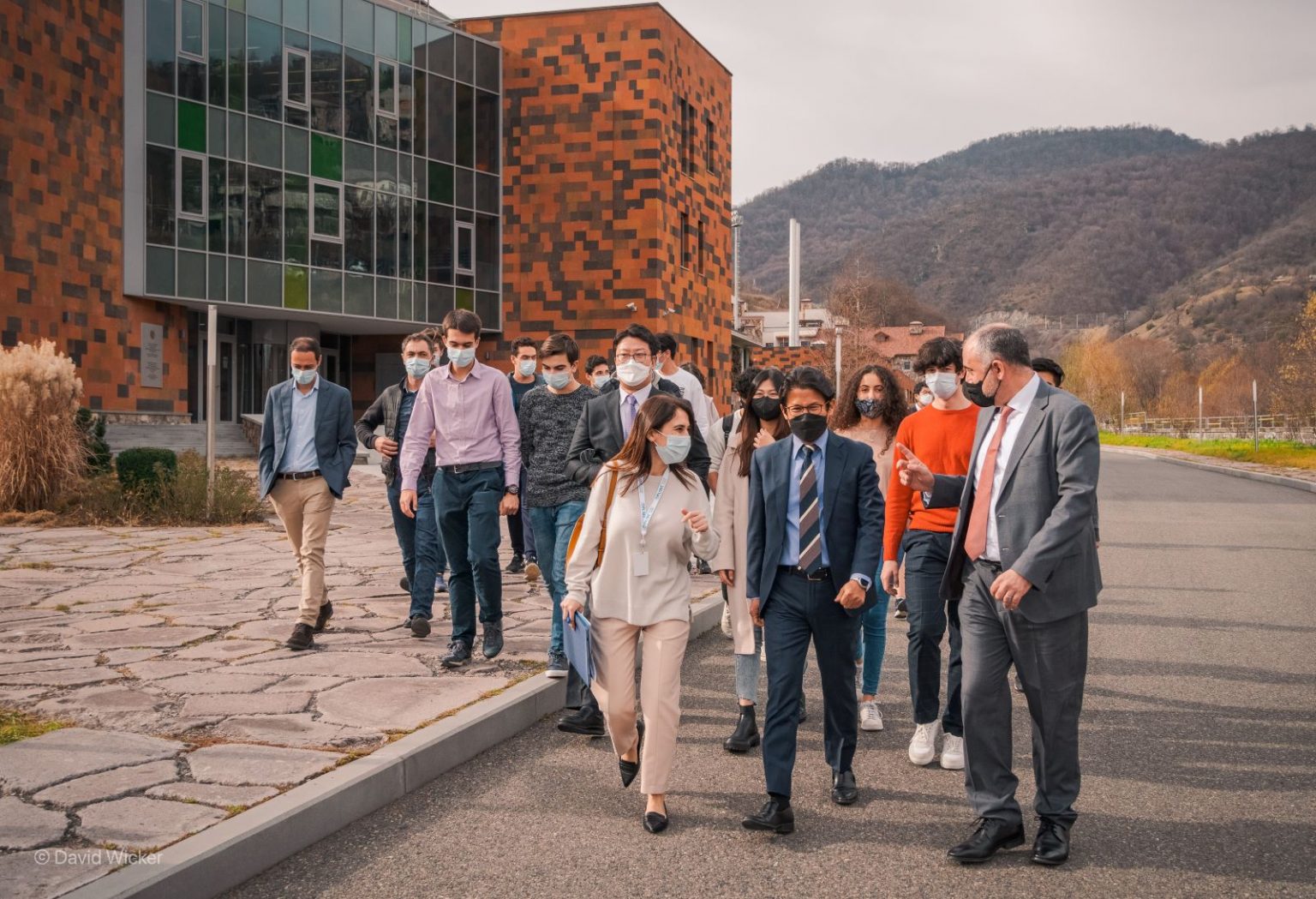By Shahen Araboghlian – Armenia Media | Wednesday, 30 March 2022
By Shahen Araboghlian – Exclusively for Armenia Media

Image caption: Crisis After Crisis Hit Artsakh
Shoushan Keshishian woke up today to no WiFi, no hot water, no electricity, no heat, all in freezing weather, in a mostly-unrecognised country frequently terrorised by its neighbour. She walked to the Hub Artsakh office – where she’ll be spending the rest of her day – for a cup of coffee she cannot have at home.
After a brief hiatus from Azerbaijan’s tight grip on Artsakh’s access to gas, the phenomenon continued earlier last week.
“I think it’s a very appropriate time to answer your questions since we’re currently experiencing our second power cut of the day,” Shoushan tells me. Having been raised in Beirut, she moved to Armenia right after the port blast that threatened her life by mere minutes; and then moved to Artsakh after the war ended.
With an MA in Post-War Recovery Studies from the University of York, it only made sense for her to settle in Stepanakert – the capital she now calls home – to help, live, create, and learn.
“Today was a very sunny day, thankfully. It’s currently freezing, but we’re at the office at Hub Artsakh; my laptop’s about to die, so I’m trying to get as much work done as possible,” Keshishian says.
After settling in Stepanakert, Keshishian founded Hub Artsakh, a “community of motivated, entrepreneurial people working together,” a get-together area used for classes, co-working, et al. In the same year, she founded the Sunrise Stepanakert Art Festival, which was a huge success among local and non-local communities alike.
“When the gas and lights both go out, that means there’s no hot water, no heat, no WiFi, choppy cell data, no way to cook unless you have a traditional wood oven. We don’t know how long the power cuts will last, it’s usually a couple of hours, but you never know.
“Due to the gas outages, people tend to use their electric means of heating which naturally overheats the power grids, so that’s lights out until the grids are fixed,” Shoushan explains. “It sounds bad when you hear about people not having gas, but living like this is a whole other story.”
She reflects on her privilege of being able to manoeuvre through the crisis. “I’m just a solo woman, who’s 24-years-old, very low-maintenance… it’s much easier for me than it is for families, I assume, with little children they have to feed and keep warm,” she sigh-exhales. “It’s an insanely difficult situation.”
Shoushan has one more thing to add, though, before she wraps up answering my questions. “The morale has been very low the past few days with the clashes on the border on top of all the existing problems. I think it’s been too stressful.”
On 25 March, four Armenian servicemen were killed on the Artsakh border, 18 more were injured. Turkish-produced Bayraktar TB-2 UAVs were used to brutally murder the servicemen of the Artsakh Defence Army. A day before that, the Defence Army declared that Azerbaijan had taken control of Parukh, a village in Artsakh. The Azerbaijani MoD has denied any escalation of violence.
A call for international assessment of the situation was put out by Armenia’s MFA not long after. The US was “deeply concerned,” UN Sec General Guterres was “concerned,” and France called for the “withdrawal of Azerbaijani forces from Artsakh.” Russia, in an unexpected statement, pointed fingers at Azerbaijan and accused them of trespassing into Russian peacekeepers’ zone.
The situation, since then, has been relatively calm. Calmness, though, is relative. “This is out of the ordinary, because even right after the war, people were very determined to be resilient. When I went to visit Yerevan for a bit and came back a few days ago, it was mostly cars with kids leaving Artsakh,” Shoushan tells me.
“The situation on the border has been stable for the past two days, but it has definitely affected morale. There’s definitely tension in the air and heaviness in everyone’s eyes. The sadness is palpable.
“It’s very challenging. Think about it, at any moment your access to your most basic conveniences, and your most basic freedoms and rights can be restricted,” Keshishian concludes.

Image caption: Armenia Beats Montenegro in Friendly Match (Photo by News.am Sport)
Our friends at Football Kentron have exclusively delivered their fresh batch of Armenian soccer-related delicacies for the week.
Armenia Men's National Team beat Montenegro in a friendly match with a scoreline of 1-0. The match winning goal came from Vahan Bichakhchyan, who plays at Pogon Szczecin in Poland. A few new players made their first appearances - more details on Football Kentron!
Armenia Men's U19 has played their two matches in the Euro U19 Elite Round against Portugal and England. Both matches ended with a 4-0 loss, unfortunately. However, there is large room for improvement for our youngsters.
On Tuesday Armenia Men's National Team will play against Norway in Oslo, 21:00 Yerevan time.
On the same day, Armenia Men's U21 will play against Serbia U21 for the Euro U21, 18:00 Yerevan time.
That’s all for this week, see you next week!

Image caption: Samsung Innovation Campus Launched at UWC Dilijan (Photo by Samsung Innovation Campus)
An exhibition dedicated to the Armenian Genocide was unveiled in Tbilisi, Georgia this past week, and will tour the country until the 24th of April. More here.
No COVID deaths were reported in Armenia on March 28. Last week, Armenia hit the 50% milestone, as half the population had received their first COVID-19 jabs. Thank you, science.
Freezy, breezy weather in Armenia as the Hydrometeorology and Monitoring Center said the country has not seen heavy snowfall in March like this for more than four decades.
The Armenian community of Kramatorsk, Ukraine, are in the process of being evacuated. The Armenian Embassy in Romania is assisting Armenians looking to flee.
Iran-Armenia talks were held to discuss establishing a North-South transport route. Read about it here.
The United World College in Dilijan, Armenia, launches the Samsung Innovation Campus. Read the deets here.
The Ukrainian parliament official Twitter account tweeted about the latest invasion of Artsakh with a thumbs-up emoji, then deleted it right after. Here’s more about that.

Image caption: Komitas’ Ingenuity Has Given Us A Lot to Enjoy in Armenian Musical Culture Today (Photo: Armenia SSR Postal Stamp, 1969)
comments
Կոչ Հայութեան ու Հայրենիքի Իշխանութեան
Editorial:1918-2024. The Struggle for Independent, Sovereign Statehood Continues
Armenia Media Updates: 29 March 2023 Edition
Armenia Media Updates: 23 March 2023 Edition
#TogetherForSyria Telethon Raises over $110,000 for Armenians In Syria
10 August 2022: Week to Week by Armenia Media with Shahen Araboghlian
3 July 2022: Week to Week by Armenia Media with Shahen Araboghlian
17 June 2022: Week to Week by Armenia Media with Shahen Araboghlian